US Senators Introduce Bill Against Iran's Drones, Following House Action

A bipartisan legislation was introduced Thursday at the US Senate Foreign Relations Committee to prevent Iran and its proxy groups from acquiring lethal drones.

A bipartisan legislation was introduced Thursday at the US Senate Foreign Relations Committee to prevent Iran and its proxy groups from acquiring lethal drones.
The Committee’s ranking member Jim Risch (R-Idaho) and Chairman Bob Menedez (D-NJ) introduced the Senate version of the Stop Iranian Drones Act of 2021, which passed the House of Representatives Foreign Affairs Committee on December 10.
A statement by the Foreign Relations Committee said the legislation “seeks to amend the Countering America’s Adversaries Through Sanctions Act (CAATSA) to include any action that seeks to advance Iran’s UAV program...as sanctionable under U.S. law.”
In an interview with the Associated Press on December 10, commander of CENTCOM Gen. Kenneth McKenzie also expressed concern over the growing capabilities of Iranian missiles and drones.
Iran’s military drone program has expanded in recent years and UAV’s have been more frequently used in attacks in recent months both on land and at sea. Several attacks in Iraq and at least one attack in Syria have targeted US forces.
Senator Risch said, “As we saw with recent Iranian-sponsored drone attacks on American troops and the Iraqi Prime Minister, as well as the constant attacks on Saudi Arabia, Iran’s armed drone capability presents a growing threat to the Middle East.
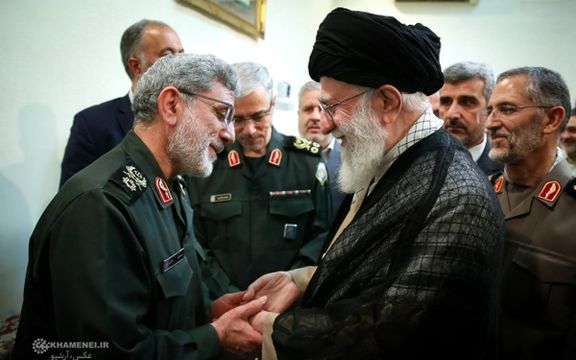
The US State Department says Iran continues to harbor al Qaeda leaders and sponsor terrorism acts, in its 2020 Country Reports on Terrorism published Thursday.
“There has been facilitation of them that allows them to remain active as leaders within the al-Qaida global enterprise,” the acting Coordinator for Counterterrorism John T. Godfrey said Thursday at a briefing introducing the 2020 report. “No secret, I think, that Iran is a longstanding state sponsor of terrorism, and I think the fact that they have enabled that leadership cadre to safely reside in Iran is a reflection of their use of terrorism as an adjunct of their foreign policy goals.”
Godfrey also said that Iran continued to support terror acts in the region “and further afield in 2020”, supporting proxies in Iraq, Lebanon, Syria, Yemen and Bahrain, including Hezbollah and Hamas.
The United States also continued high-level diplomatic contacts to counter Hezbollah’s presence in Central and South America and in Europe, resulting in nine countries taking “significant steps” in 2020 “to designate, ban, or otherwise restrict” Hezbollah.
In response to a question as to how the Biden Administration is cooperating with Saudi Arabia to counter Iranian proxy forces Godfrey said, “I think Saudi Arabia has faced a particular threat in recent years from the Houthis in Yemen, and obviously that’s a group that has enjoyed quite a bit of support from Iran, and we’ve been public about our concerns about that. And that’s something that we’ve continued to work with them on.”
However, the Biden Administration removed the Houthis from a terror designation list almost as soon as it took office in early February and since then has repeatedly condemned their missile and drone attacks against Saudi Arabia.
In the report itself, the State Department says, “The Houthis continue to receive material support and guidance from Iranian entities, including to enable attacks against Saudi Arabia. These attacks have utilized armed drones and ballistic missiles, which damaged airports and critical infrastructure.”
The report highlights the role of IRGC’s Qods (Quds) Force saying that Iran continued to acknowledge the active role the military-intelligence unit plays in regional conflicts from Iran and Syria to Yemen and elsewhere. It also says that Hezbollah “remained Iran’s most dangerous terrorist partner and the most capable terrorist organization in Lebanon, controlling areas across the country. Iran’s annual financial backing to Hizballah — which in recent years has been estimated to be in the hundreds of millions of dollars — accounts for most of the group’s annual budget.”
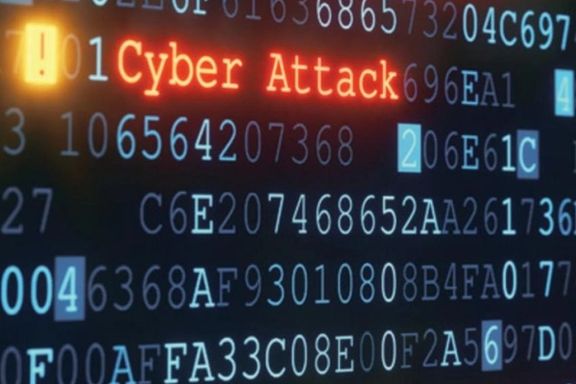
A dangerous Iranian state-sponsored hackers’ group has exploited a new cybersecurity flaw, reportedly targeting Israeli entities and potentially others.
The hackers have tried to exploit a flaw in the commonly used Java-based logging tool Apache Log4j. The flaw has been fixed but hackers might have already established foothold in some networks.
The Israeli cybersecurity firm Check Point has said the Iranian group involved that tried to attack Israeli entities is the familiar Charming Kitten or APT35. “Check Point has blocked these attacks, as we witnessed communications between a server used by this group and the targets in Israel,” the firm announced.
The US Federal Bureau of Investigation, FBI, also issued a guideline for companies to report suspected malicious activities on their networks related to the latest threat dubbed the Log4j vulnerability.
A cybersecurity expert, John Hultquist, said that Iranian state hackers are particularly aggressive in exploiting the latest flaw and want to use it in ransomware operations, not so much for financial gain but to cause widespread disruption.
Iran’s intelligence organs, particularly the Revolutionary Guard operate one of the world’s most dangerous cyber-threat state operations and APT35 is thought to be linked to this network.
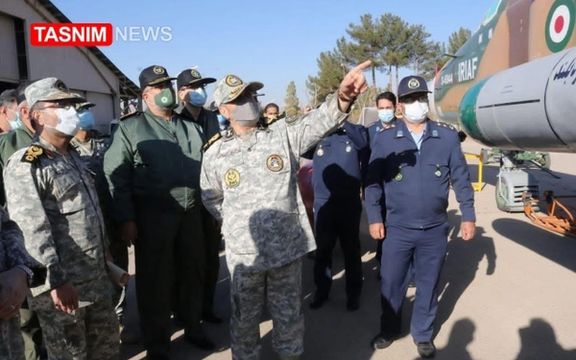
Following weeks of reports of Israeli preparations for attacking Iran's nuclear installations, the Tehran Times warned Wednesday of a strong Iranian response.
In an article headlined "Just One Wrong Move," the English-language newspaper splashed on its front page a map of purported missile targets in Israel. "An intensification of the Israeli military threats against Iran seems to suggest that the Zionist regime has forgotten that Iran is more than capable of hitting them from anywhere," the state-owned newspaper observed.
Tehran Times responded specifically to a Washington Post report, picked up by Israel's Yedioth Ahronot Tuesday, that Israel’s June 8 air strike on Syria had been “a direct message” to Iran. Yedioth Ahronot claimed Israel was now demanding that the US seek a complete end to Iran's ballistic missile capacity.
Tehran Times quoted Major General Mohammad Bagheri, Chief of Staff of Iran’s armed forces, that Iran did not underestimate the threat. "At the strategic level, we do not intend to strike anyone,” he said, “but at the operational and tactical level we are ready for a decisive response, and a quick and tough offensive against the enemy.”
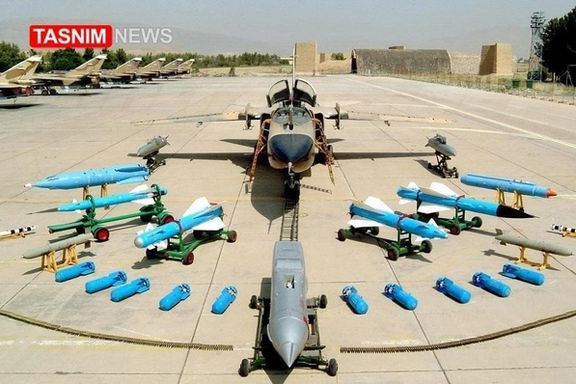
The article concluded with a quotation from a 2013 speech by Iran’s Supreme Leader Ali Khamenei. "They are threatening to strike militarily, but I think they know it, and if they do not know it, they must know that if they make a mistake, the Islamic Republic will destroy Tel Aviv and Haifa.”
IRGC-affiliated Tasnim news agency Wednesday ran an article on equipping Iranian fighter jets with cruise missiles, thought to be the Hoveizeh, allegedly with a 1500km range. Headlined "Sharp Blade of Iran's Fencer [Sukhois] on Israel's Neck,” the piece rehashed a plan announced in 2018 to fit ageing Russian-made Sukhoi-22 and Sukhoi-24 jets with Cruise missiles.
There is no independent confirmation of Iran's claim about fitting the warplanes with a Russian-copy cruise missile. The announcement could have been made amid nuclear talks and Israeli threats.
This time Tasnim splashed a map showing the possible range of Iran's airplane-launched cruise missiles, all the way to Europe.
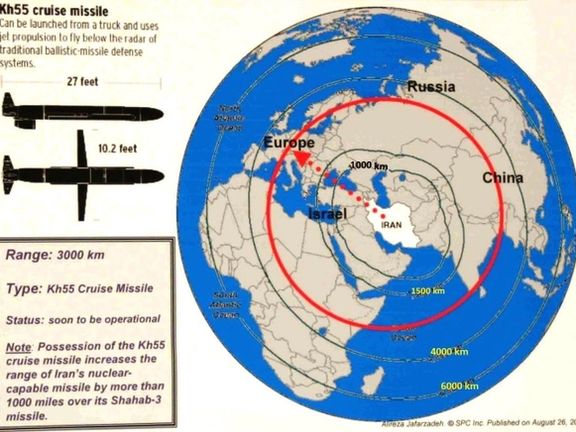
Israeli media say Defense Minister Benny Gantz on Thursday presented a timeline for attacking Iran to American officials. According to the Jerusalem Post, Gantz met no opposition. Israeli media have claimed planning is intensifying, as talks in Vienna continue with the aim of reviving Iran’s 2015 nuclear deal, with the aim of decisively curbing not just Tehran's atomic program but its missile defense.
The New York Times Saturday claimed Israel had consulted with the US on two previous occasions before launching attacks, the attack on June 23 against a centrifuge-parts manufacturing facility near Karaj and an explosion on September 26 at a Revolutionary Guards facility to the west of Tehran that killed two.
Iran subsequently restricted access to the Karaj site by the International Atomic Energy Agency (IAEA), as it reviewed security. The IAEA announced Wednesday Tehran had agreed to allow agency inspectors to service monitoring equipment at the site.
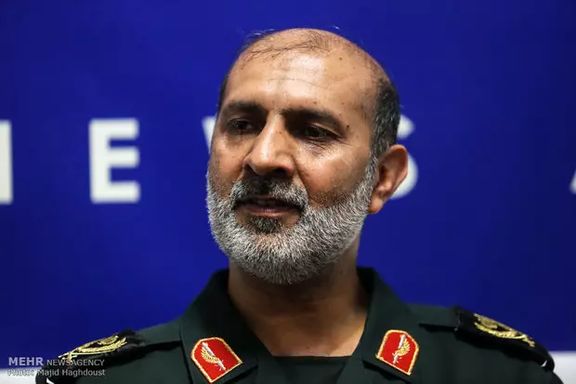
A top Iranian military official has dismissed a proposed bill at US Congress to strengthen measures against Tehran’s growing drone program as ineffective.
General Rasul Sanairad, the political deputy to the chief commander of Iranian armed forces told Mehr news agency on Wednesday that all previous sanctions on Iran have not worked and the Islamic Republic has been able to make substantial progress in developing weapons systems.
A bi-partisan group of lawmakers in the US House of Representatives presented a bill on December 1 to restrict proliferation of Iran's military drones. The lawmakers behind the proposed legislation, the Stop Iranian Drones Act (SIDA), say it clarifies that US sanctions on Iran’s conventional weapons program under CAATSA (The Countering America’s Adversaries Through Sanctions Act) include the supply, sale or transfer to or from Iran of drones.
Sanairad who represents of Supreme Leader Ali Khamenei insisted that Iran’s weapons are not a threat to neighboring countries. Recent reports have said that Israel and others are concerned over the fast-growing capabilities of Iranian military drones, in addition to its ballistic missiles.
Sanairad went on to accuse Israel of endangering security in the region and threatening safety of navigation. He also questioned the US military’s “illogical” presence in the region.
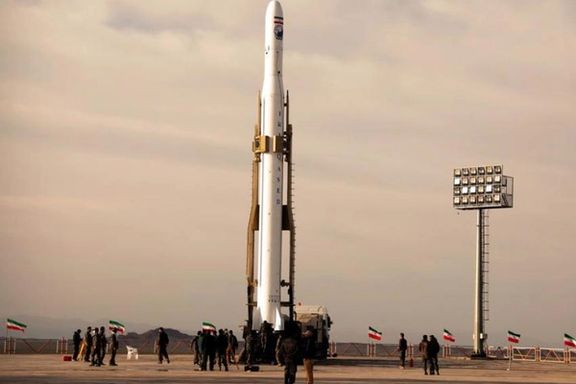
Iran's hardline President Ebrahim Raisi has allocated 12 times more money to the country's space program in his new budget amid nuclear talks with world powers.
The budget bill for the next Iranian year, which starts on March 21, includes eight trillion rials for the Revolutionary Guard's Aerospace Command, as well as additional budgets to other organizations that contribute to the program.
The 8-trillion rial funding is a modest $35 million if calculated at current business exchange rates, but it is a large sum when most of it is spent in Iran, where salaries and equipment is much cheaper.
This is in contrast to last year's budget in which Rouhani had allocated only 390 billion rials to the Space Organization affiliated with the Ministry of Communication and 280 million rials to the ministry itself to spend on expanding infrastructure. This clearly shows the two government's approaches to boosting the space program.
So far there is no news of the imminent satellite launch foreign media and space monitoring agencies have been talking about during recent days. However, members of the Higher Council for Aerospace Activities have met recently after 11 years, and activities monitored around Iran's launching pads in Semnan area in central Iran indicate that a launch will probably take place.
President Raisi has said that the meeting is indicative of the high priority his government attaches to the space program. Others attending the meeting included General Amir Hajizadeh the commander of the IRGC's Aerospace Force and Foreign Minister Hossein Amirabdollahian.
During the past decade Iran has launched several satellites into space but their journeys in the outer space did not last long. In 2003, one of the Iranian satellites even carried an ape but no one believed the animal Iran showed as the one returning to earth was the same monkey.
Observers outside Iran have charged that Iran's space program is a cover to justify its testing of ballistic missiles. Israel and the United States have said that Iran's space program is against a UN decision saying Iranian missiles should not have nuclear weapons capability.
The activities monitored in the central Iranian desert are similar to preparations made ahead of missile and satellite launches coinciding with nuclear negotiations. There were criticisms in the past that such moves were meant to sabotage any rapprochement between Iran and the West.
After the 2015 nuclear deal, the IRGC launched missiles with Hebrew slogans written on them calling for wiping Israel off the map. The difference this time is that those who are negotiating and those who launch the missiles are not each other's political rivals. They both come from the heart of Iran's hardliner conservative camp.
While monitoring agencies and foreign entities are closely following the moves on the ground, Iran has not been concealing its ambitions in space. Raisi visited a space technology exhibition in Tehran on November 26 and asked officials to work on reaching the 36,000 km orbit around the earth in four years.
The likely blast off at Iran's Imam Khomeini Spaceport comes as Iranian state media has offered a list of upcoming planned satellite launches in the works for the Islamic Republic's civilian space program, which has been beset by a series of failed launches.
While missile and satellite launches in the previous years might had been aimed at disrupting negotiations over Iran's nuclear program, this time it appears that Iranian officials are mainly about to show off Tehran's technological progress and highlight the country's ballistic missile capabilities possibly to scare regional players.